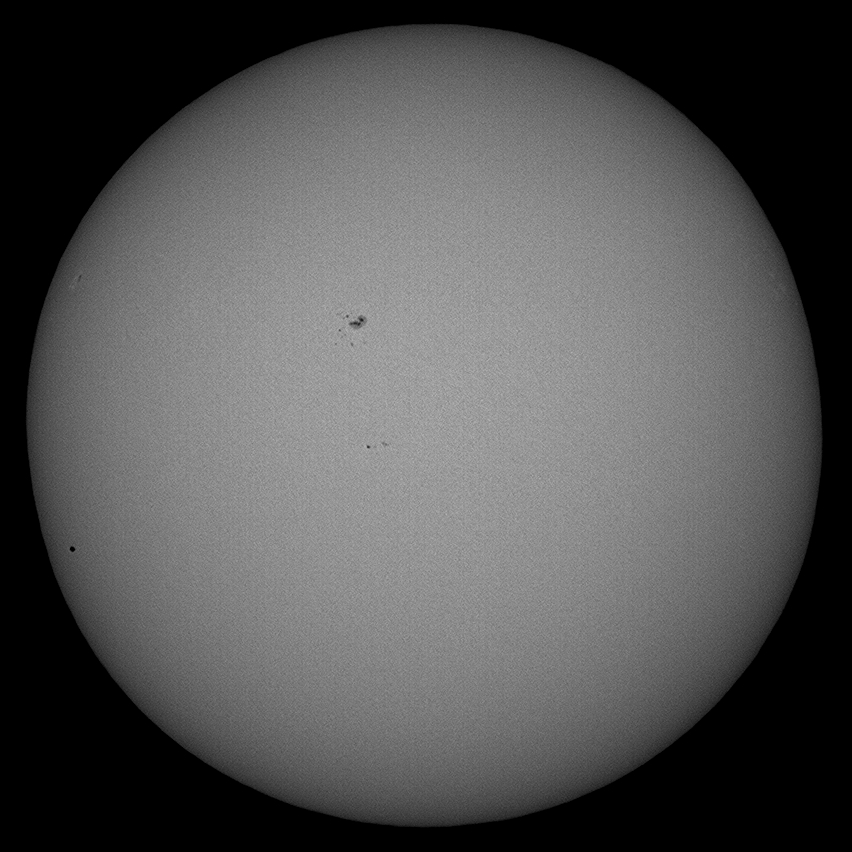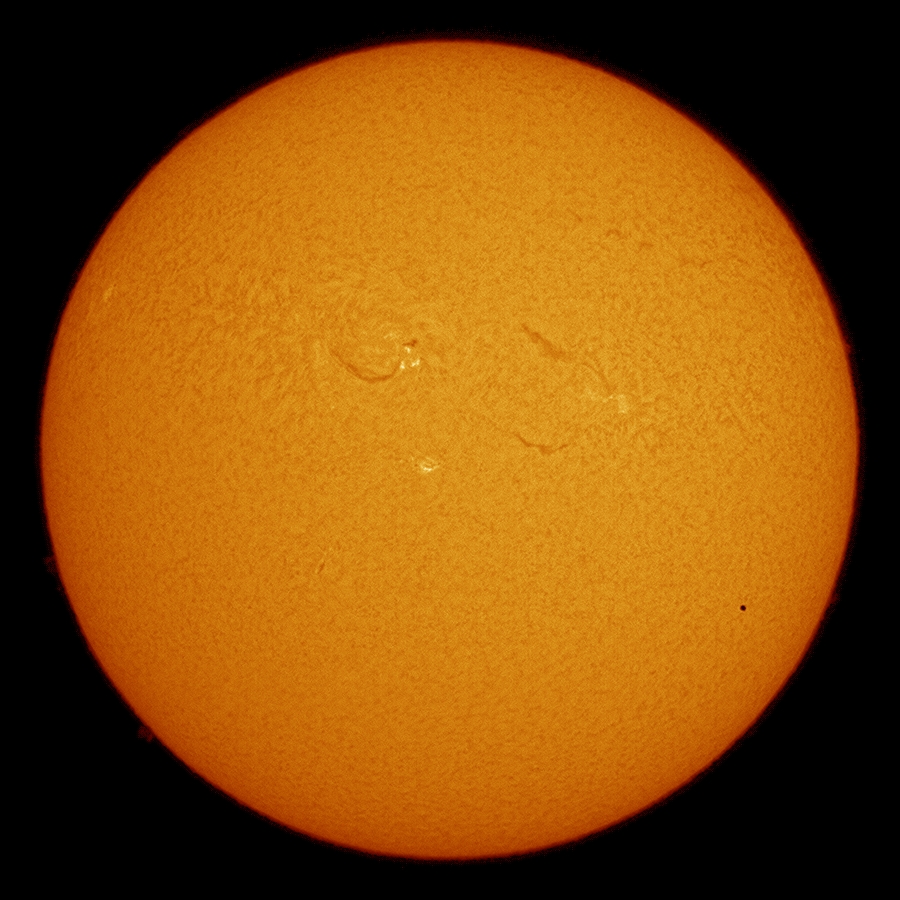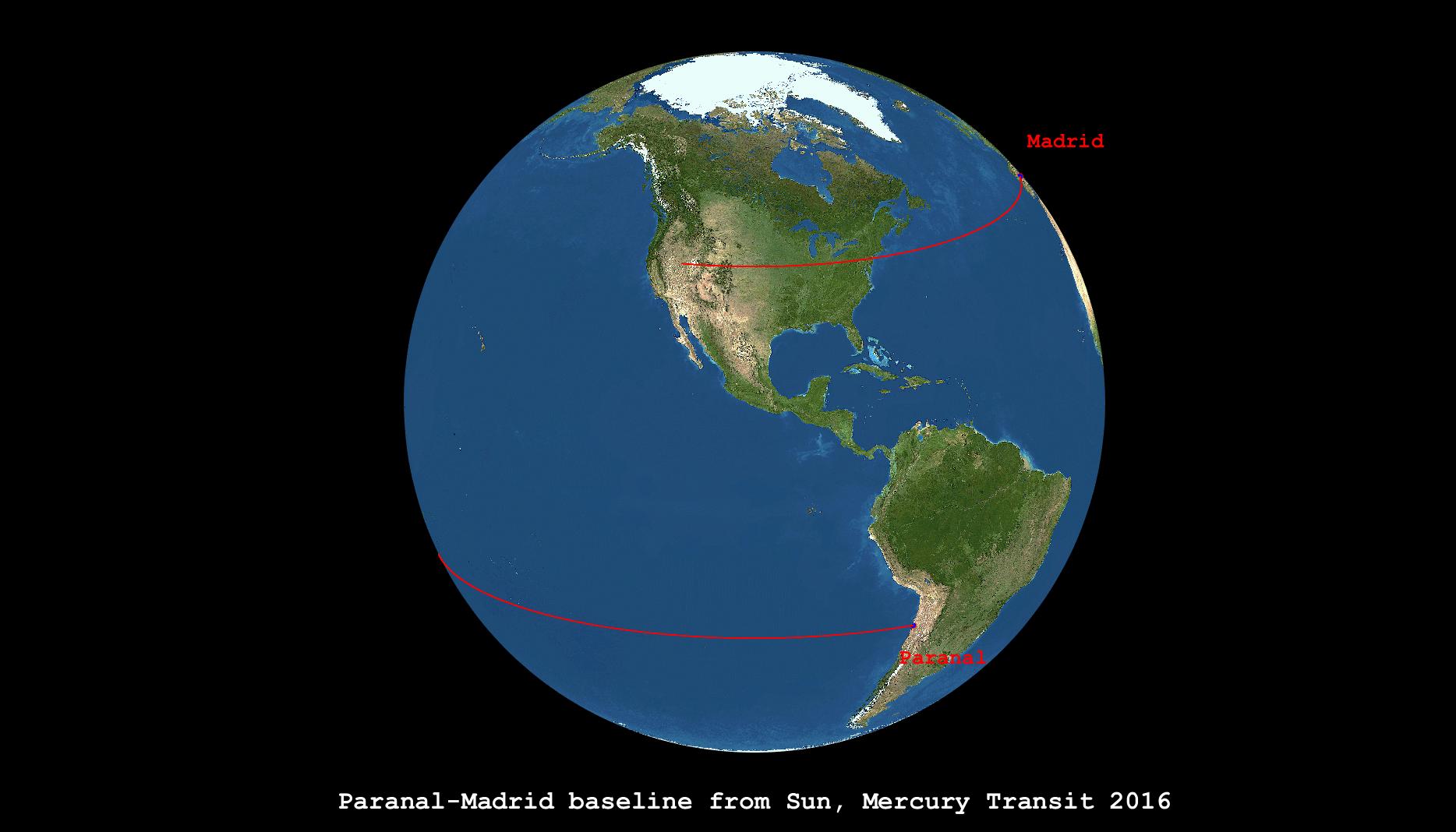Mercury Transit 2016 - CESAR
MERCURY TRANSIT 09 MAY 2016
More information: Watch Streaming TV | WATCH THE SUN LIVE | Follow the Sun Live in your Mobile | General Mercury Transit information | Check for visibility at your location | BepiColombo | Ciutat de les Arts i les Ciencies | ESO Mercury Transit Page | ESA Education schools challenge | ESAC | What is H-alpha | What is white light
SUCCESS !
The teams could capture the transit. Here a summary of the results
|
TEIDE, TENERIFE, SPAIN |
|
 |
 |
|
Example image, Teide, H-alpha |
Example image, Teide, visible |
|
CERRO PARANAL, CHILE |
|
 |
 |
|
Example image, Cerro Paranal, H-alpha |
Example image, Cerro Paranal, visible CLICK HERE for video Paranal visible |
HANGOUT - replay
FIRST PART:
SECOND PART
Sun observation campaign with large baseline. Expeditions to CERRO PARANAL and tenerife.
A presentation is available here. The embedded videos are here 1, 2 ,3, 4 and 5. Please put them in the same folder to be visualized in the powerpoint.
As part of the Sun related CESAR activities, and continuing the extraordinary experience from the Venus Transit 2012, two expeditions were organized to observe the unique event from 2 distant locations on Earth. The selected sites were Cerro Paranal, in the Andes range, Chile, and the European Space Astronomy Center ESAC in Madrid, Spain. This is a large baseline of 9943km (surface distance) with full transit visibility and good statistical chances of clear skies. But due to the bad weather, we observed from the Teide Observatory in Tenerife island (Spain) instead of Madrid. The dataset offered unique information and spectacular parallax effects in two spectral ranges (h-alpha and white light). The acquired images were transmitted wordlwide LIVE via these links (link1 and link2). A public educational interactive event was set up, in which the involved experts presented what was hapenning, and were asked in an interactive Q&A session through Twitter.

Animation: differential rotation of the Paranal-Madrid basline during the whole transit, as seen from the Sun. Simulations: Miguel Pérez Ayúcar
 |
 |
|
Visibility map and expeditions location
|
Surface distance. Cerro Paranal - ESAC: 9973km
|
Parallax measurements during the Mercury Transit 2016
One of the educational goals is to determine the Mercury parallax and derive the Astronomical Unit (A.U.) measure, using the images obtained during the transit from Cerro Paranal and Tenerife. CESAR provides educational laboratory exercises that guide students through similar exercises, like in this link (developed for Venus). The Mercury parallax measurement is more challenging than Venus', as the relative sizes and parallax is smaller. Mercury is just 12", while Venus was 58". This means that the Sun is 158 times larger than Mercury! A specific case for Mercury will be added.
 |
|
Mercury parallax ESAC (red) Paranal (green). Zoom on ingress (left and egress (right). |
- Removed a total of (5) style text-align:center;
- Removed a total of (3) style text-align:left;
- Removed a total of (1) border attribute.
- Removed a total of (1) cellpadding attribute.
- Removed a total of (1) cellspacing attribute.
- Converted a total of (7) center to div.
- Converted a total of (3) youtube to youtube-nocookie.








































 Sign in
Sign in
 Science & Technology
Science & Technology




